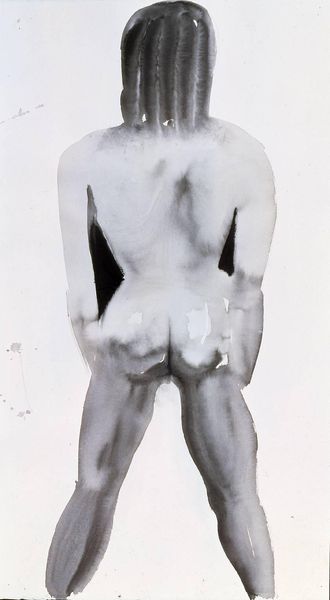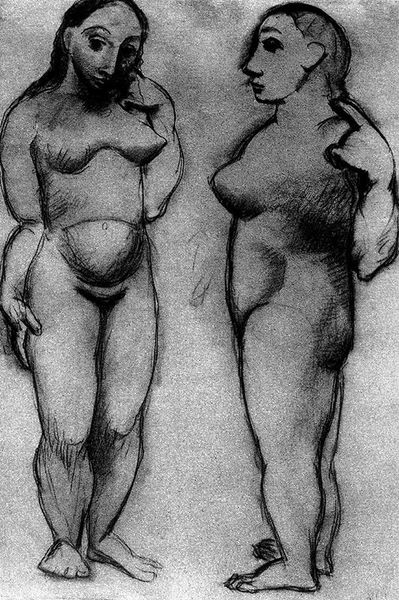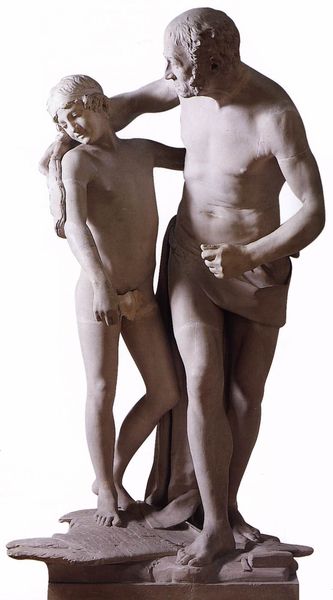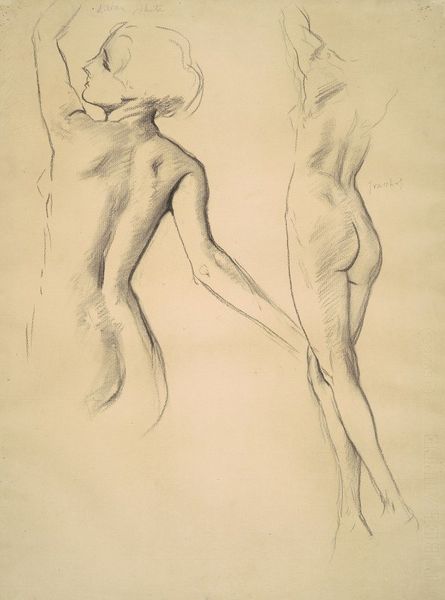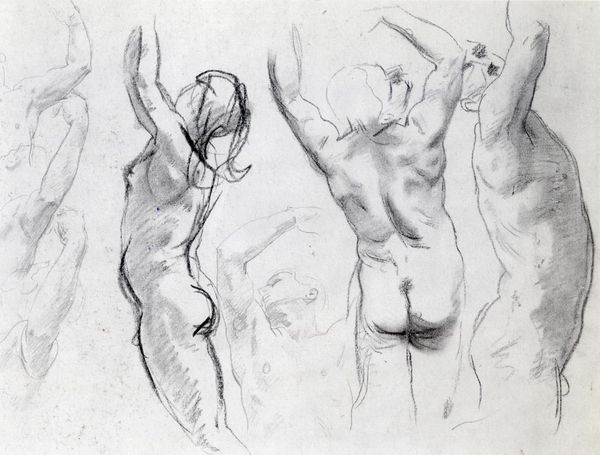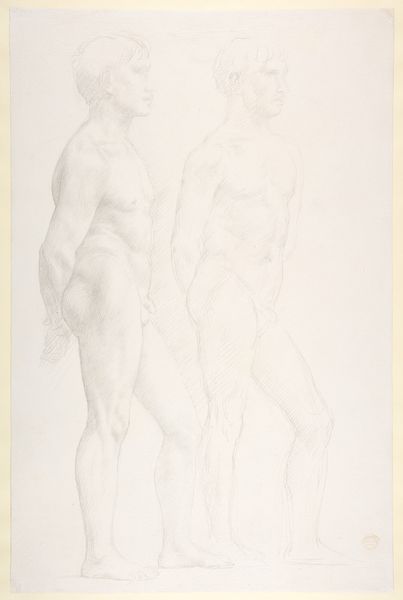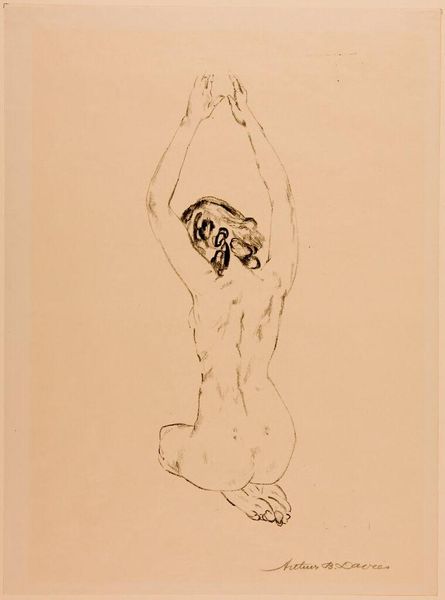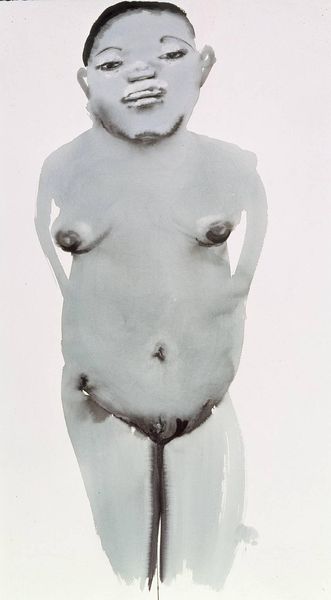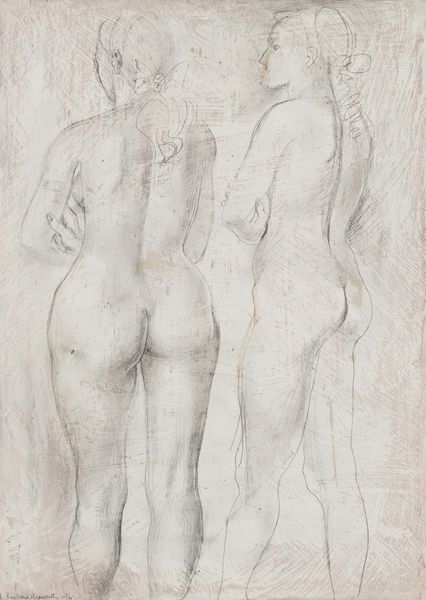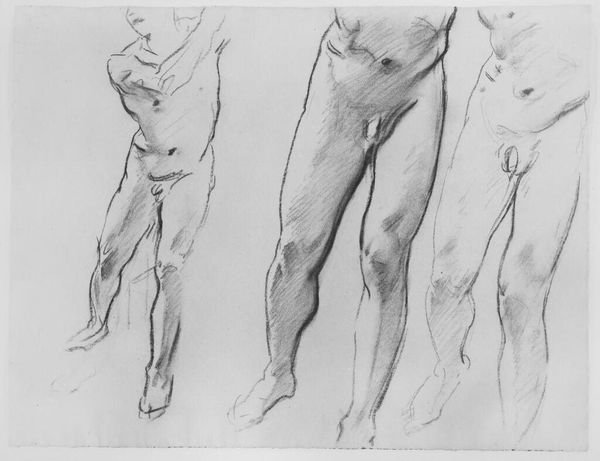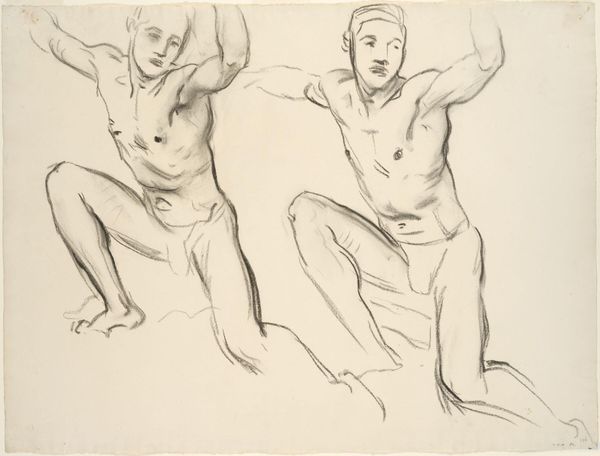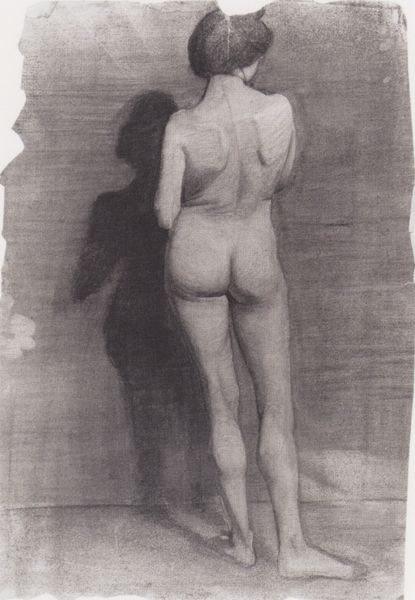
Torsos of two male nudes
0:00
0:00
johnsingersargent
Yale University Art Gallery (Yale University), New Haven, CT, US
drawing, pencil, graphite
#
pencil drawn
#
drawing
#
pencil sketch
#
charcoal drawing
#
figuration
#
pencil drawing
#
sketch
#
pencil
#
limited contrast and shading
#
men
#
human
#
graphite
#
portrait drawing
#
academic-art
#
nude
#
male-nude
#
arm
Dimensions: 121.1 x 160 cm
Copyright: Public domain
Editor: This drawing, "Torsos of two male nudes," is a pencil and graphite work attributed to John Singer Sargent. It strikes me as academic, like an exercise in form, but the lack of defined facial features gives it a sense of detachment. What do you see in this piece, beyond the surface of the skillful rendering? Curator: It's crucial to acknowledge the historical context. Sargent, working in a time of shifting social norms, participates in the legacy of the male nude, laden with complex signifiers of power, sexuality, and the classical ideal. Yet, these torsos, while technically proficient, seem to lack the heroic narrative often associated with such depictions. They feel unfinished, prompting us to question the gaze itself: whose body is being observed, and for what purpose? How does this relate to issues of class and the objectification of the male form throughout art history? Editor: That's interesting. I hadn't thought about the power dynamics involved. So, the 'unfinished' quality is less about a lack of skill and more about challenging established norms? Curator: Precisely. The incompleteness invites speculation, encouraging a more critical examination of representation and desire. We might ask ourselves if Sargent is intentionally withholding a fully realized image, prompting a dialogue about the male body as both a site of strength and vulnerability, dominance and submission. What does this drawing contribute to a broader discussion around masculine identity, then and now? Editor: That definitely changes my perception of the artwork. I see how the absence of traditional heroic markers allows for a more nuanced interpretation. Curator: Exactly. By deconstructing classical ideals, Sargent indirectly opens space for discussions about alternative modes of being, queerness, and the fluidity of gender—discussions we're still grappling with today. Editor: I learned so much about the underlying historical and social factors impacting even what appears on the surface to be a simple sketch. Curator: It's a reminder that art never exists in a vacuum. Engaging with these historical layers adds depth and relevance to our understanding of the present.
Comments
No comments
Be the first to comment and join the conversation on the ultimate creative platform.
